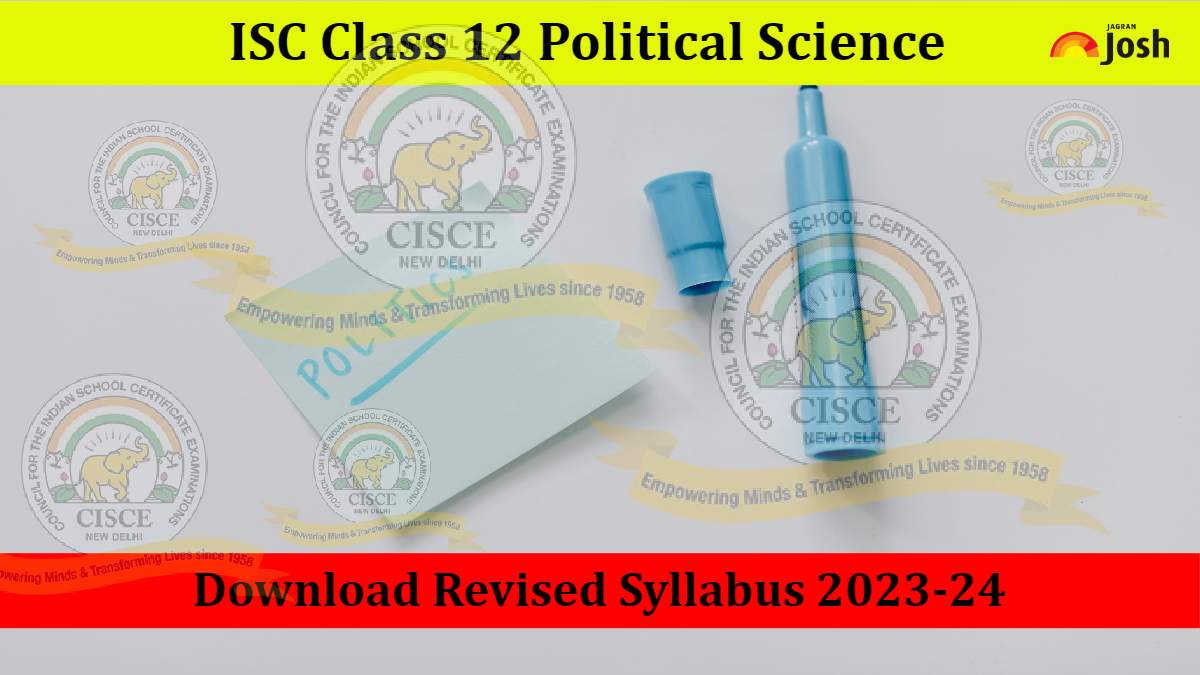Jagran Josh
PAPER I (THEORY) – 80 Marks
SECTION A (Constitution and Government)
1. Forms of Government
Totalitarian and Authoritarian States, Liberal Democratic State, Unitary and Federal States, Parliamentary and Presidential forms of government.
Meaning and features of Totalitarian State, Authoritarian State and Liberal Democratic State.
Comparison between Totalitarian and Authoritarian States.
Meaning and features of Unitary and Federal States. India as a federal state with subsidiary unitary features, comparison between unitary and federal state (with one example of each).
Meaning and features of Parliamentary and Presidential forms of government (U.K. and U.S.A.). Comparison between Parliamentary and Presidential forms of government.
2. Constitution
Meaning; kinds of Constitutions: Written and Unwritten, Rigid and Flexible: merits and demerits. Amending procedures.
Meaning; Kinds: Written and Unwritten, Rigid and Flexible: merits, demerits of each.
Amending procedures of the Constitutions of U.K., U.S.A and India.
3. Franchise and Representation
Universal Adult Franchise; Methods of Election; Minority Representation. Political Parties; Party System.
Universal Adult Franchise – meaning, reasons for widespread acceptance.
Methods of Election: Direct and Indirect – meaning with examples.
First Past the Post System – meaning only.
Methods of Minority Representation: Proportional Representation (meaning only). Political Parties – meaning. Kinds – Single party, Bi-party, Multi-party system – meaning only.
Organs of the Government
4. The Legislature
Legislature; Unicameral and Bicameral legislatures. The legislature in India and U.S.A. – a comparative study.
Meaning of Legislature. Meaning of Unicameral and Bi-cameral legislature. The legislatures in India and U.S.A.- Composition (strength, method of election and tenure) and functions: legislative, constituent, executive (ways in which the legislature controls the executive), judicial, electoral and financial.
Composition and powers of the House of Representatives and the Senate, Lok Sabha and Rajya Sabha (including special powers).
Unique powers of the Senate, why is the Senate considered the world’s most powerful second chamber?
Comparison of the Rajya Sabha and the U.S. Senate; Lok Sabha with the U.S. House of Representatives.
5. The Executive
Difference between the Political Executive and the Permanent Executive. Political Executive in India and U.S.A. – a comparative study.
Meaning, of the Executive.
Difference between the Political and Permanent Executive in India. Political Executive in India and U.S.A. – a comparative study. Powers and functions of executive heads of India (President and Prime Minister), and U.S.A. (President).
6. The Judiciary
Meaning of Judiciary. Conditions of Independence of Judiciary. Judiciary in India and U.S.A. – a comparative study. Judicial Review.
Meaning of judiciary; conditions of independence of judiciary with reference to India and U.S.A. The Judiciary in India and U.S.A. – composition and powers of Indian Supreme Court and American Supreme Court. Judicial Review – meaning, principles (maxims). Meaning of Judicial Activism and Judicial Restraint. Comparative study of Indian and US Supreme Courts.
SECTION B (Indian Democracy)
7. Indian Constitution
(i) Preamble
Preamble and its importance. Meaning of the key words contained in the Preamble.
(ii) Salient features of the Indian Constitution.
Written and Comprehensive; a Constitution drawn from several sources; Federal structure with Unitary spirit; Partly rigid and Partly flexible; Fundamental Rights and Duties; Directive Principles of State Policy; Parliamentary form of Government; Single Citizenship; Bi-cameral legislature; Universal Adult Franchise; Single Integrated and Independent Judiciary; Judicial Review; Emergency powers; Special provisions for Schedule castes and Schedule tribes.
8. Fundamental Rights and Directive Principles
Fundamental Rights and Directive Principles of State Policy.
Fundamental Rights: meaning of Fundamental Rights; detailed study of all Fundamental Rights in India.
Directive Principles of State Policy: classification: liberal Gandhian and socialist.
Difference between Fundamental Rights and Directive Principles of State Policy.
9. Local self-government
73rd and 74th Constitutional Amendment Acts.
Key features of the 73rd and 74th Amendments. 11th and 12th schedules in brief.
Composition and functions of Zila Parishad and Municipal Corporation.
10. Democracy in India – a perspective of the challenges faced
Challenges faced by the Indian Democracy: Caste, Communalism, Regionalism. Strengthening Indian Democracy.
Caste: meaning, role of caste in Indian Politics.
Communalism: meaning only.
Kinds of regional aspirations: language issues, sons-of-the-soil policies, river water disputes, demand for new states, secessionist demands.
Strengthening Indian Democracy: measures to overcome the challenges faced by Indian Democracy.
#ISC #Class #Political #Science #Revised #Syllabus #Exam #Download #Syllabus #PDF
